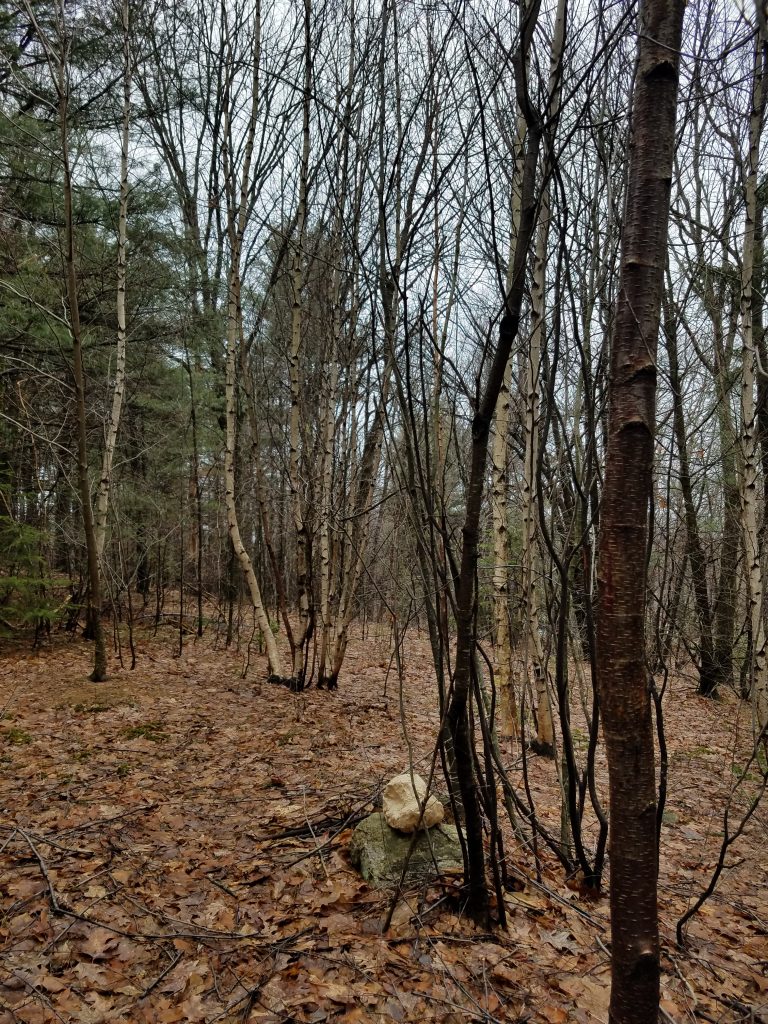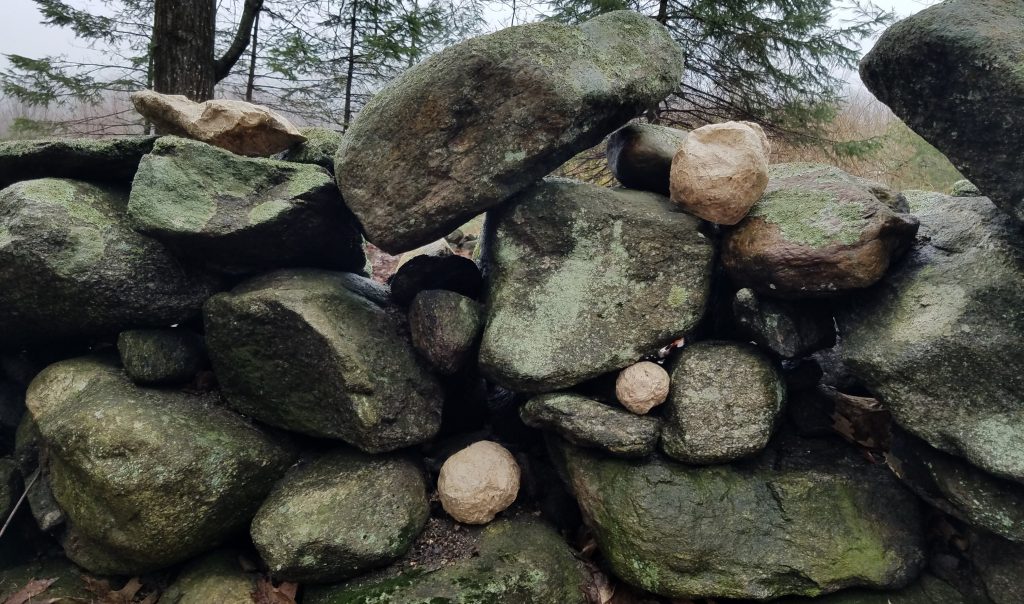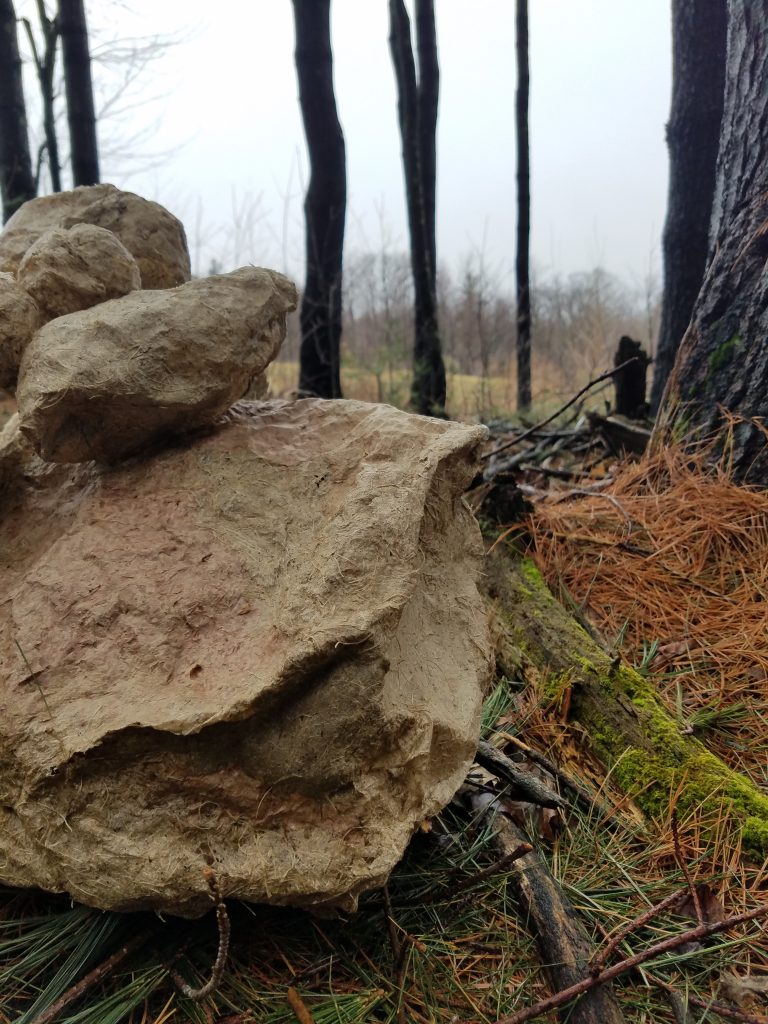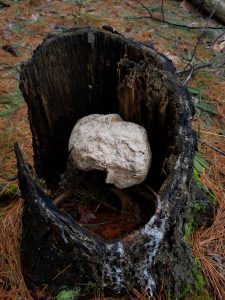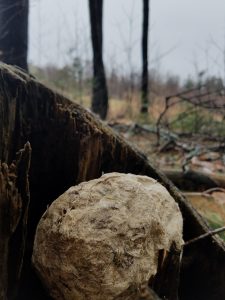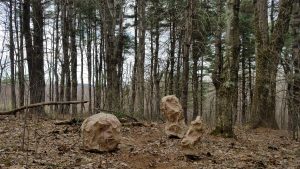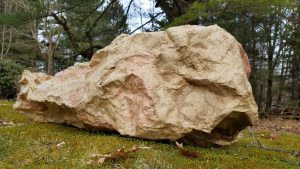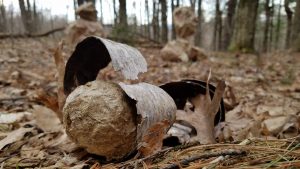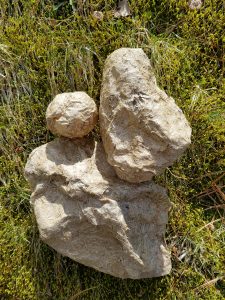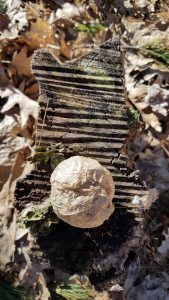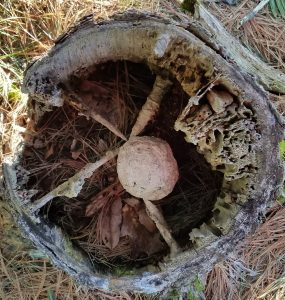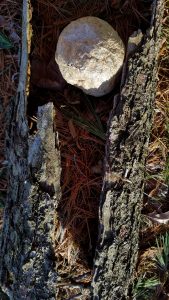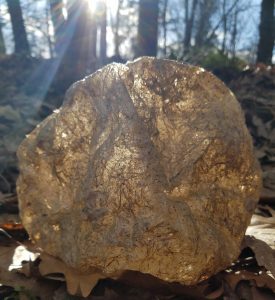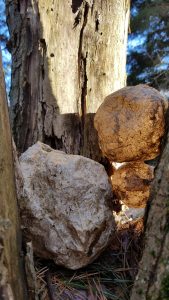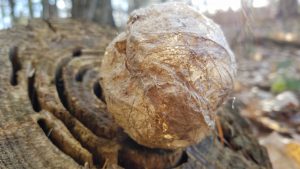Borne Erratics
This project is made from foraged natural materials entirely found in my immediate environment. Through the different qualities of the patchwork of my handmade paper, and its close resemblance to rocks, I have explored themes of place and belonging (or lack thereof). Two words relating to rock formations and arrangements have informed my thinking: “cairn” and “erratic.” A cairn is a pile of stones arranged either as a method of navigation and orientation in nature (especially on hiking trails) or as a memorial or gravesite. Cairns symbolize the interaction between humans and nature that has existed for thousands of years. The word erratic, in geological terms, is a stray mass of rock foreign to the rock surrounding it that has been moved from its original site, such as through glacial activity: a “glacial-borne” erratic. In other contexts, erratic can mean irregular, unpredictable, wandering, or nomadic.
When I first began this project, I was primarily concerned with the objects as sculptural forms and I tried to address questions of craft, material, authorship, and interaction. However, in this new reality of social distancing, I have shifted my focus to broader questions about embeddedness, dislocation, and intervention within the environment. I am interested in the tension that arises from these ambiguous forms mimicking natural, found forms (like seed pods, nests, cocoons) yet simultaneously being entirely handmade through the intensive process of papermaking. Paper holds imprints of any action upon it; a crease or fold can never be erased, much like human action on the landscapes we inhabit. It is my hope that the fragility of these forms, despite their seeming permanence, reminds us of the fleeting, ephemeral moments in nature that we may only glimpse before they disappear.
Materials: Handmade paper (daylily leaves, iris leaves, onion skins, shallot skins, garlic skins, corn husks, leek tops, recycled found paper scraps, newspaper) and wheat paste (flour and water).
